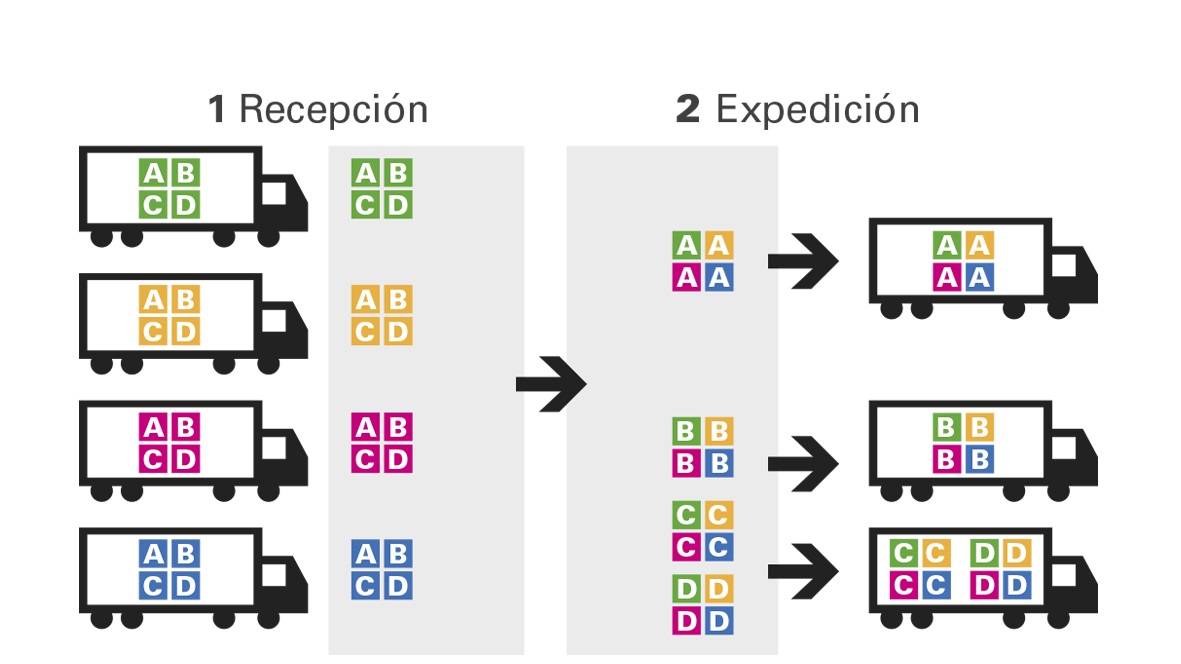Cross-docking is here to revolutionise the world of logistics and storage, guaranteeing customers minimum delivery times and distributors fewer storage space needs.
What is Cross-docking?
Cross-docking is a logistics model where products are unloaded from a lorry, van, railway carriage, container, etc., handled and immediately loaded onto the means of transport that will deliver it to the customer. The model’s main objective is to reduce storage and handling time to a minimum.
This system was conceived and matured in the world of mass consumption and retail, starting with a basic model: stock is gathered in distribution warehouses, where it is classified, handled and loaded onto small, manoeuvrable vehicles and each one heads to the shops or supermarkets to deliver the goods.
But it is e-commerce, following the footsteps of Amazon, which is making the most of its maximum potential, as delivery time is a very important buying reason for many consumers.
Why minimise storage?
The main reason is to limit any unnecessary risks. During the time a product is being stored, besides not generating value, it can be exposed to some risks:
– Decrease in value: a change in demand or market saturation can turn a high-margin product into a commodity.
– Breakages, losses and/or theft.
There are other reasons like:
– Not needing to work with large storage spaces.
– Less investment needed to adapt to new sector requirements.
– New logistics spaces closer to urban centres.
As a result, we can monetize some spaces that we can find in nearby areas or even in city centres, which was unimaginable some years ago.
Ventajas de este modelo de gestión logística
Besides the positive effects of reducing storage time, this model has several advantages, such as:
-
Purchase control: Purchases are adapted to short-term demand, tying up fewer financial resources on a day-to-day basis.
-
Lower storage and handling costs: this model requires less storage space and product rotation is much higher, which means fewer structural costs.
-
Although staff needs are higher, overall handling costs are lower, due to the human teams being more productive.
-
Warehouse work is less monotonous as workers handle different references during any one working day.
-
Better customer satisfaction by reducing delivery times to a minimum.
How to implement it?
Most warehouses need to make a huge change when they decide to take on board a cross-docking model. Implementing it requires time and the operations that are going to be carried out need to be analysed. Each company will need precise specifications and will have to make the corresponding process adjustments. That’s why it’s important to work with companies that are specialised in this field.
At Estanterías Record we are committed to innovation and strive to find processes that help improve our customers’ logistics.
Request more information about our solutions via the following link.

